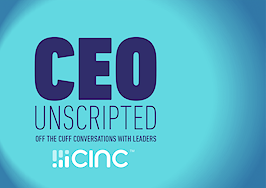Online real estate lead generation is a great way to get new real estate clients. However, it can be daunting to start and time-consuming to ensure your campaigns are performing optimally.
Whether you succeed with online real estate lead generation often depends on whether you find a partner to help you generate the most high-quality leads that fit your unique needs. So we sat down with Harry Kierbow, Senior Director of Paid Social Media Marketing at CINC and self-proclaimed ‘webinerd’ to talk us through best practices when looking to lower cost per lead.
Optimize your ads
Optimization is best when you monitor and refine your ads based on performance. Not only the text and graphics, but also the targeted audience, and time of day when ads are showing, etc.
“A great way to start optimizing your ads is to look at the data you have and make decisions,” says Kierbow. For example, to see which weekdays contribute to the most conversions at the lowest CPL, go to your Facebook Ads Manager reports and use the Breakdown menu to break down your campaigns by day.
At CINC, the team has access to a mind-boggling amount of data thanks to being the only Facebook Preferred Partner in real estate, and they perform analyses that allow them to deliver better leads at a lower cost for their clients. “We test en masse and get meaningful results more quickly. We can then use proprietary technologies we’ve developed to make sweeping changes to accounts, allowing our client’s campaigns to be the most nimble in real estate.”
Learn more about optimizing ads and getting the lowest cost per lead in your market.
Optimize your landing pages
The landing page is the website your ad sends the prospect to when they click. And these pages should undergo just as rigorous testing as the ads themselves. If the ads are optimized around interest and attention, the landing page needs to be optimized for conversion.
“Test, test, and test some more,” Kierbow recommends. “Even a small uptick in your conversion rate on a landing page could deliver a few extra leads per month for your existing spend. And use real data. Try tools like heat maps, scroll maps, confetti maps, and overlay reports to understand what happens on the page before you start experimenting.”
Because CINC is the largest real estate advertiser in the US, the company is able to run large scale tests for their clients to gain meaningful results quickly and easily. As Kierbow notes, “we have also invested substantially in technology to make large changes to sites across the board and see one of the highest conversion rates in the industry, as an advertiser.”
Implement remarketing campaigns
While it would be wonderful to think a prospect will convert the first time they hit your landing page, the reality is that it takes several visits and reminders to convert a lead. But if those reminders are based on behavior and interests they’ve already shown, success is that much more likely.
“As long as the audience is large enough, targeting ads to people who’ve already clicked or visited your landing page generally lowers your lead costs,” advises Kierbow. “This helps you to avoid unnecessary spending on people who are not really interested in your products—whether that is paying by click or impression—and also helps to make sure you don’t make assumptions and exclude people who would be interested in your service via cold traffic targeting.”
CINC offers many different types of remarketing strategies including dynamic property remarketing, branded remarketing and custom audience remarketing.
Diversify your spend
Like the stock market, Kierbow suggests you spread your marketing dollars across a variety of channels and products, utilizing different ad types and objectives across different advertising networks.
“We recommend clients spend a larger portion of their budget on Google, which tends to carry a higher cost per lead but yields leads with a shorter average time frame to buy based on how ads are served,” Kierbow shared. “Then have smaller portions dedicated to Facebook and Instagram and remarketing campaigns across both search engines and social media.”
CINC’s own data analysis reveals that leads from Facebook and Instagram tend to carry a lower lead cost, but a longer average timeframe to purchase compared to leads from search engines. “This also makes Facebook and Instagram a great option for advertising homes or services that a lead may not know enough about to search for—like specific loan programs or homes in a new neighborhood.”
CINC utilizes both dynamic property remarketing (ListCast) and brand remarketing to bring leads back that don’t sign up initially and nurture those leads that do sign up.
“This recommended spending strategy is designed with our client’s long term success in mind,” Kierbow explains. “We focus a client’s budget on gaining as many “now” leads as possible while building future pipeline and nurturing all leads from any source to shorten their closing timeline as much as possible—resulting in more ROI more quickly for our clients.”











